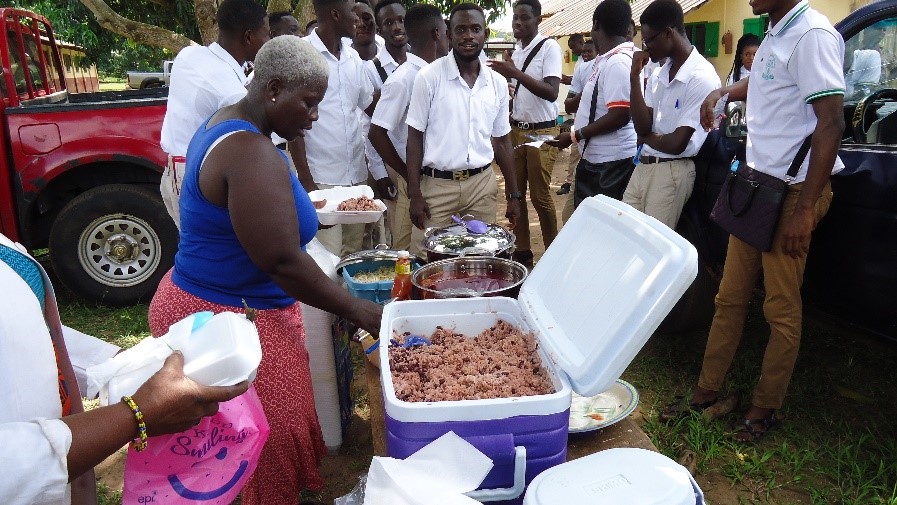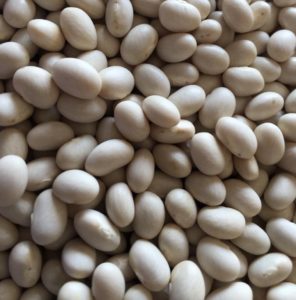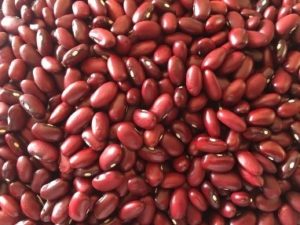The Crops Research Institute of the Council for Scientific and Industrial Research (CRI-CSIR), has introduced four new common bean (baked beans) varieties, for adoption by farmers.
Hunger and malnutrition persist in Ghana, primarily in the north, as well as in many rural and peri-urban communities across the country. Around 24.2 % of the population live below the national poverty line. Ghana is the highest cowpea growing country with over 180,000 hectares, more than any legume in the country.
“We are so excited about the bean programme in Ghana. This is due to the fact that those varieties alien to the West African terrain, have proven to thrive well on Ghanaian soil unlike in other countries in the sub-region still grappling to successfully cultivate these same type of beans” remarked Dr. James Asibuo, Bean programme at Crop Research Institute during the launch release of the four bean varieties
Common beans contain a variety of vitamins, minerals, and other nutrients, providing protein, fiber, folate, iron, potassium, and magnesium for the wellbeing of consumers. Ghana has just released four new bean varieties – ‘Ennepa‘, ‘Adoye‘, ‘Nsroma‘, and ‘Semanhyia‘, on a larger scale to enhance their livelihoods.
The newly released bean varieties were given local names with a different meaning from their generic names corresponding mainly to the magic perception of farmers:
From left to right: Ennepa, Nsroma, Adoye, and Semanhyia bean varieties recently launched in Ghana.
| Variety | Accession name | Meaning |
| Ennepa | G 53 | Good deeds |
| Nsroma | SMR 53 | Star |
| Adoye | G 90 | Benevolent |
| Semanhyia | Roba 1 | If I hadn’t met you |
During the launch release, participants among them farmers were taken on a practical field visit to experience the performance of the varieties on-farm. The tour took place at the Kwadaso Research Station in the Ashanti Region, to demonstrate the agronomic importance of the varieties.
The farm demonstrations were to determine the bean characteristics, yield potentials, and commercial value of the exportable commodities, especially on the international market. So far, the collaborative institutions have supervised the cultivation of about 20 acres of common beans, on an experimental basis at the CRI-CSIR’s Research Stations, including Asante-Mampong, Akomadan, and Fumesua.
Researchers and scientists working on the project are elated about the success story, describing the release of the new common bean varieties as a breakthrough. This is to promote bean production, distribution, and consumption nationally and regionally, stressing that there was a ready market for bean farmers. Dr. Asibuo has been working with stakeholders at various levels to promote the commercial cultivation of common beans in the interest of the nation and farmers.
Famers growing these new varieties target home consumption and street vending foods, “Waakye”, a traditional nutritious street dish made from beans and rice, is very affordable. They grow the crop and use it in their food basket.
Canned beans, white pea beans, are popular among the middle-income group in Ghana. And the small red variety fits into the local food preparation, of Waakye (rice cooked with bean/cowpea) which is consumed in the morning and afternoon in the cities and villages and is popular among all classes of people.
Two processing factories have expressed interest in the pre-cooked bean and the nutrition contribution that the crop can bring to the table of poor householders in Ghana and other West and Central Africa countries. Efforts to reach out to private sectors operating in restaurants and agro-industry have permitted to introduce bean crop to two new food processors including Premium Foods Limited (PFL) funded by World Food Programme (WFP) and Government of Canada, and a private agro-industry under the government of Ghana initiative, Casa de Ropa. The company has support from the government flagship program “one district one factory”. The two agro-industries have strong linkages with farmers/producers and aggregators working along the value chains of many crops. Video of the farm visit and the launch of the bean varieties is on https://www.youtube.com/watch?v=i7yu5F5zTCI.



